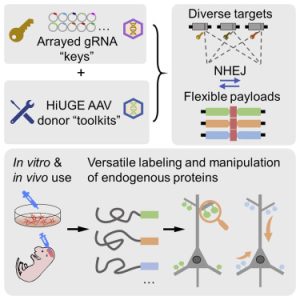The Chair of Cell Biology at Duke University Medical Center, George Barth Geller Distinguished Professor for Research in Molecular Biology, Professor of Cell Biology and Neurobiology, and Director of the Transgenic Mouse Facility, Dr. Scott Soderling began his research journey while completing his undergraduate degree at Pacific Lutheran University. As a school with strong biology and business departments, and a close proximity to Mount Rainier conducive to pursuing mountain climbing, it wasn’t until a particular genetics class that Dr. Soderling knew which of the two majors to declare. Indeed, through an introduction to gene mapping using drosophila with a gene mutation, Dr. Soderling became fascinated with discovery – being the first to see something that has existed for millions of years. Ergo, he majored in biology with a concentration in biochemistry, going on to pursue a PhD in the department of Pharmacology at the University of Washington in a lab that studied cell communication, particularly signal transduction through the identification of enzymes impacting this process. Through this intersection of molecular biology and bioinformatics, Dr. Soderling concentrated on the role of cAMP and cGMP in the activation of kinase-mediated phosphorylation and thus cell signaling. During his postdoc at the Vollum Institute, where Dr. Soderling wanted to understand the impact of cell spatial organization and communication on physiology, he identified the WRP protein as being imperative for the WAVE signaling network, the latter of which directs actin reorganization in neurons (Soderling et al., 2002). Additionally, Dr. Soderling saw a clear link between what he was studying and human health when, in the case of a patient with an intellectual disability whose X chromosome and chromosome 3 had been translocated, there was a link between this phenomenon and a mutation in the gene for WRP.
Today, Dr. Soderling and his lab focus on the neurobiology of neurodegenerative, developmental, and psychiatric disorders through proteomics, mouse models, and genetics. Although the job requires hard work to ensure success and presents challenges when grants or papers are rejected, Dr. Soderling believes the genuine enjoyment he derives from his career surpasses any such tribulations. In fact, this, combined with the freedom to be creative with his academic pursuits, being able to work with smart people from all over the world, opportunities for travel, and watching students and postdocs grow in the lab, is what makes him feel fortunate about the path he’s chosen. For Dr. Soderling, some of the best advice he’s ever received came from his father, who suggested that he choose between academia and industry according to whichever path offered the most options afterwards. Now, his own advice for students considering a career in science or research is to choose that which inspires the most passion and love, for if so, hard work won’t feel like work at all.
Lastly, when asked if he wanted to share any embarrassing or funny moments he experienced in the lab, Dr. Soderling mentioned a practical joke his fellow lab members played on him while he was a postdoc. As he was reviewing data he had just gotten back for his paper on WAVE1 and the novel WRP protein, he received an email from an alleged professor at another research institute whose work mirrored his own. The implications of such an email were enough to make the blood drain from Dr. Soderling’s face. His lab mates let him sweat for a moment, before bursting out in laughter and confessing that it had been a ruse. Although the moment inspired a mixture of stress and embarrassment, Dr. Soderling laughs while telling the story.
A sincere thank you to Dr. Soderling for his time and the opportunity to learn about his own experiences with science and research.

